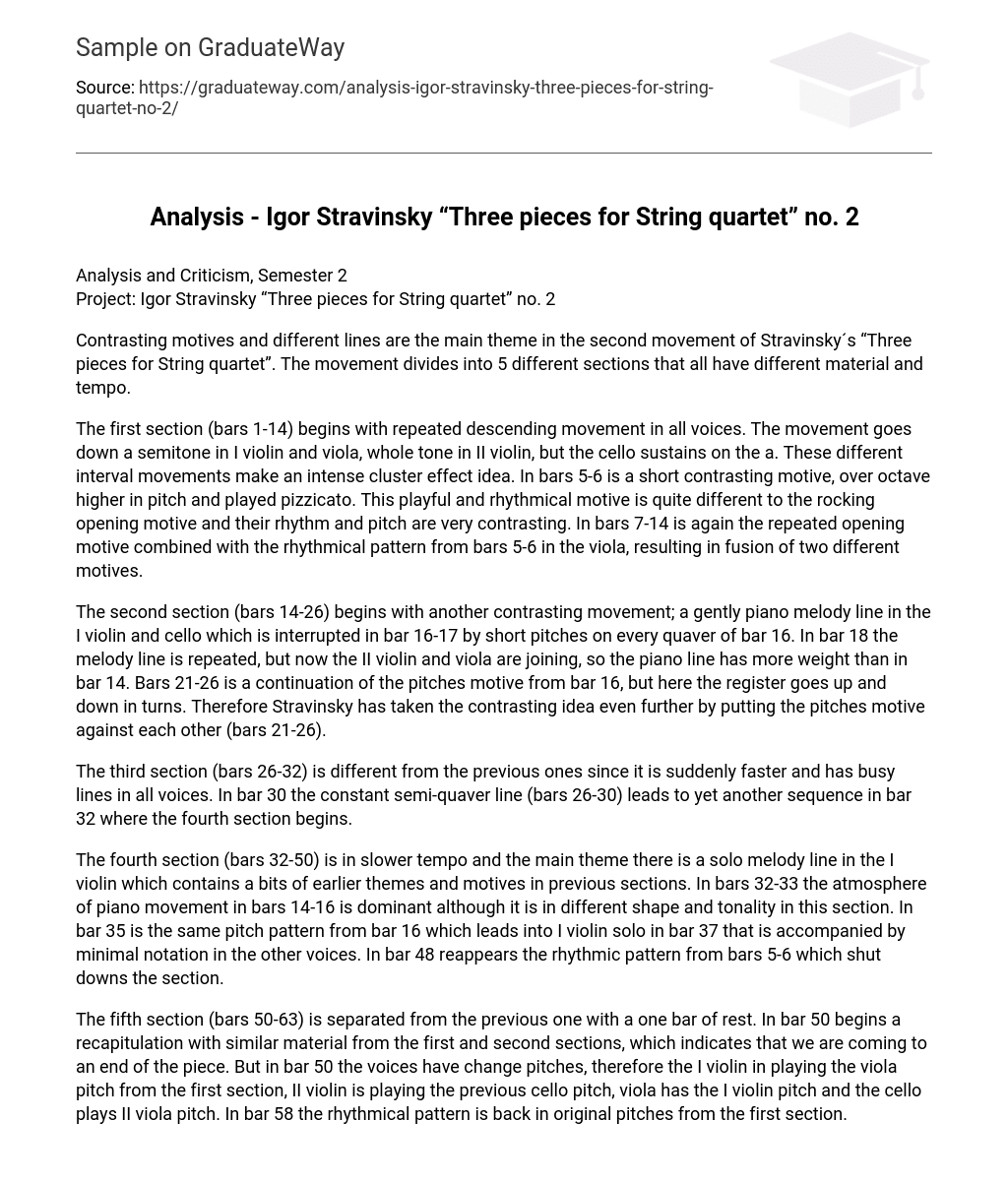Contrasting motives and different lines are the main themes in the second movement of Stravinsky´s “Three pieces for String quartet”. The movement divides into 5 different sections that all have different materials and tempos.
The first section (bars 1-14) begins with repeated descending movements in all voices. The movement goes down a semitone in I violin and viola, the whole tone in II violin, but the cello sustains on the a. These different interval movements make an intense cluster effect idea. In bars, 5-6 is a short contrasting motive, over octave higher in pitch and played pizzicato. This playful and rhythmical motive is quite different from the rocking opening motive and their rhythm and pitch are very contrasting. In bars 7-14 is again the repeated opening motive combined with the rhythmical pattern from bars 5-6 in the viola, resulting in the fusion of two different motives.
The second section (bars 14-26) begins with another contrasting movement; a gently piano melody line in the I violin and cello which is interrupted in bars 16-17 by short pitches on every quaver of bar 16. In bar 18 the melody line is repeated, but now the II violin and viola are joining, so the piano line has more weight than in bar 14. Bars 21-26 is a continuation of the pitches motive from bar 16, but here the register goes up and down in turns. Therefore Stravinsky has taken the contrasting idea even further by putting the pitch’s motives against each other (bars 21-26).
The third section (bars 26-32) is different from the previous ones since it is suddenly faster and has busy lines in all voices. In bar 30 the constant semi-quaver line (bars 26-30) leads to yet another sequence in bar 32 where the fourth section begins.
The fourth section (bars 32-50) is in a slower tempo and the main theme there is a solo melody line in the I violin which contains a few earlier themes and motives in previous sections. In bars 32-33 the atmosphere of piano movement in bars 14-16 is dominant although it is in different shape and tonality in this section. In bar 35 is the same pitch pattern from bar 16 which leads into I violin solo in bar 37 that is accompanied by minimal notation in the other voices. In bar 48 reappears the rhythmic pattern from bars 5-6 which shut downs the section.
The fifth section (bars 50-63) is separated from the previous one with one bar of rest. Bar 50 begins a recapitulation with similar material from the first and second sections, which indicates that we are coming to an end of the piece. But in bar 50 the voices have changed pitches, therefore the I violin is playing the viola pitch from the first section, II violin is playing the previous cello pitch, the viola has the I violin pitch and the cello plays the II viola pitch. In bar 58 the rhythmical pattern is back in its original pitches from the first section.





